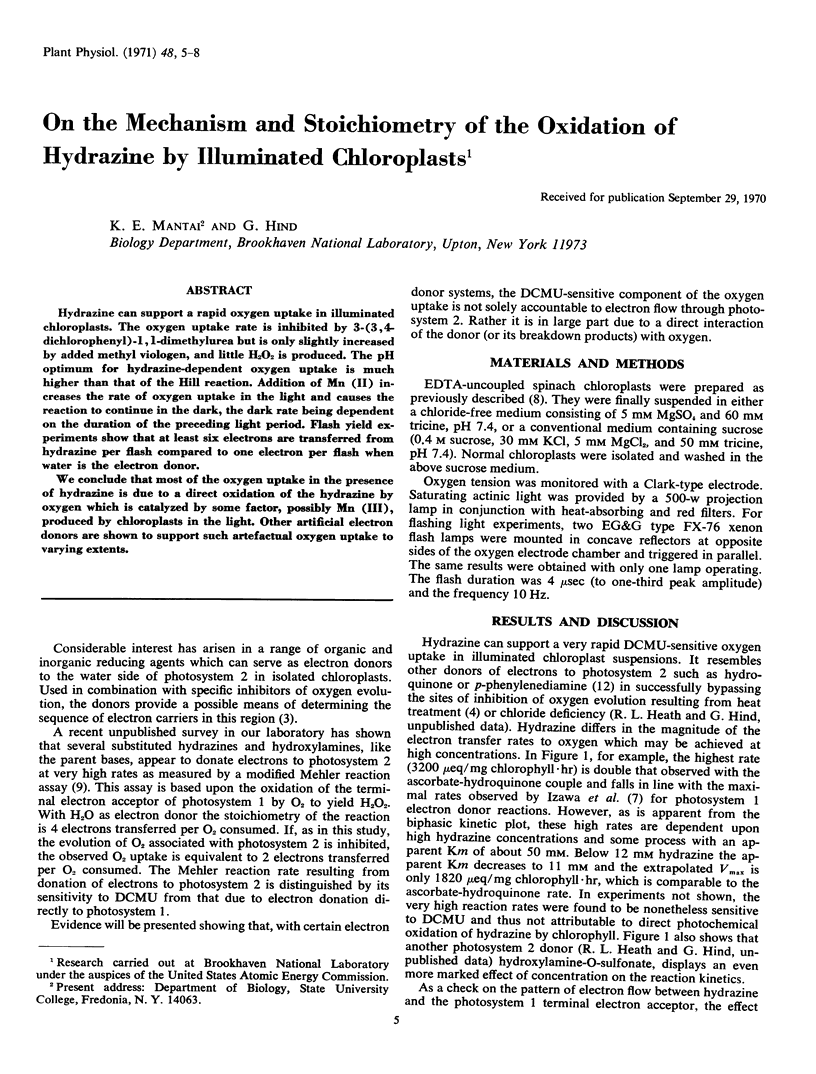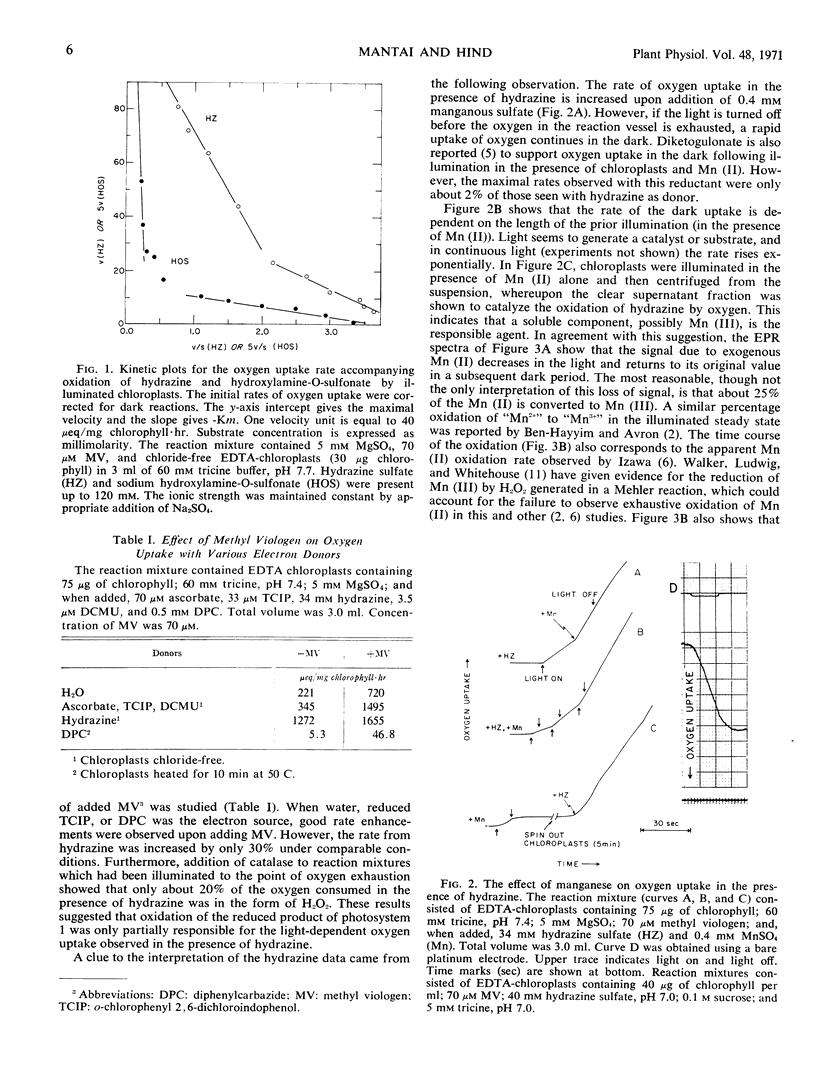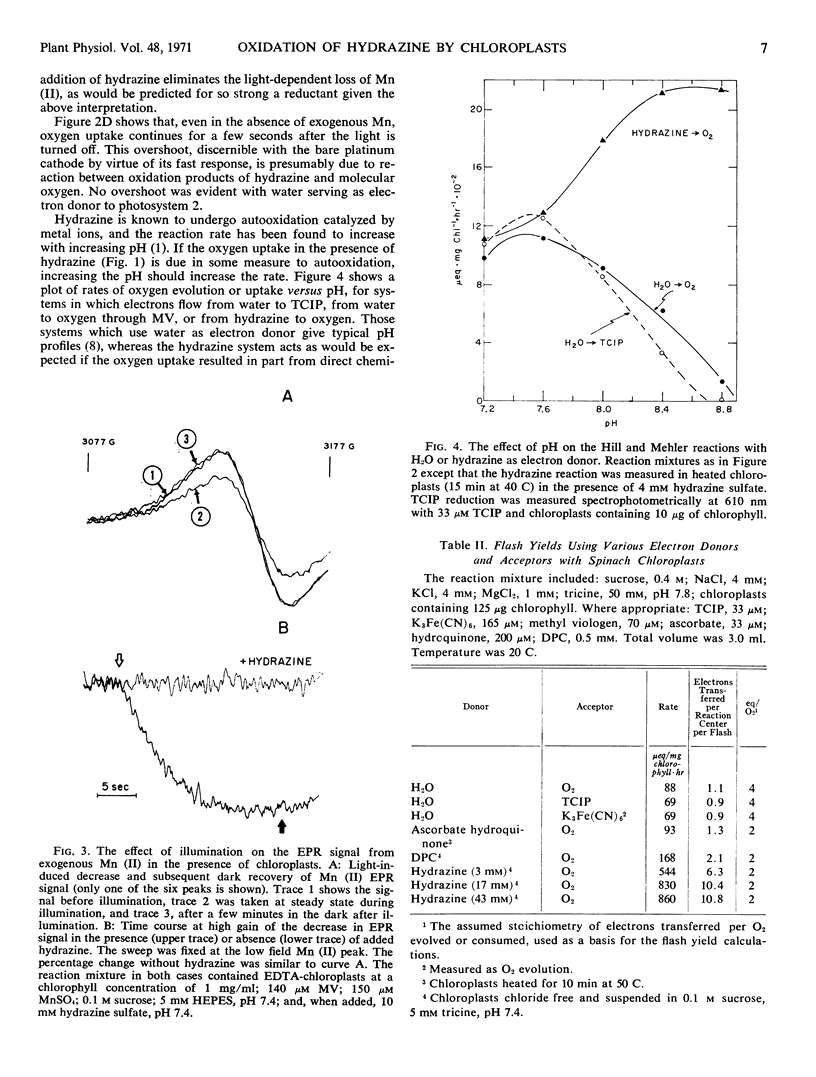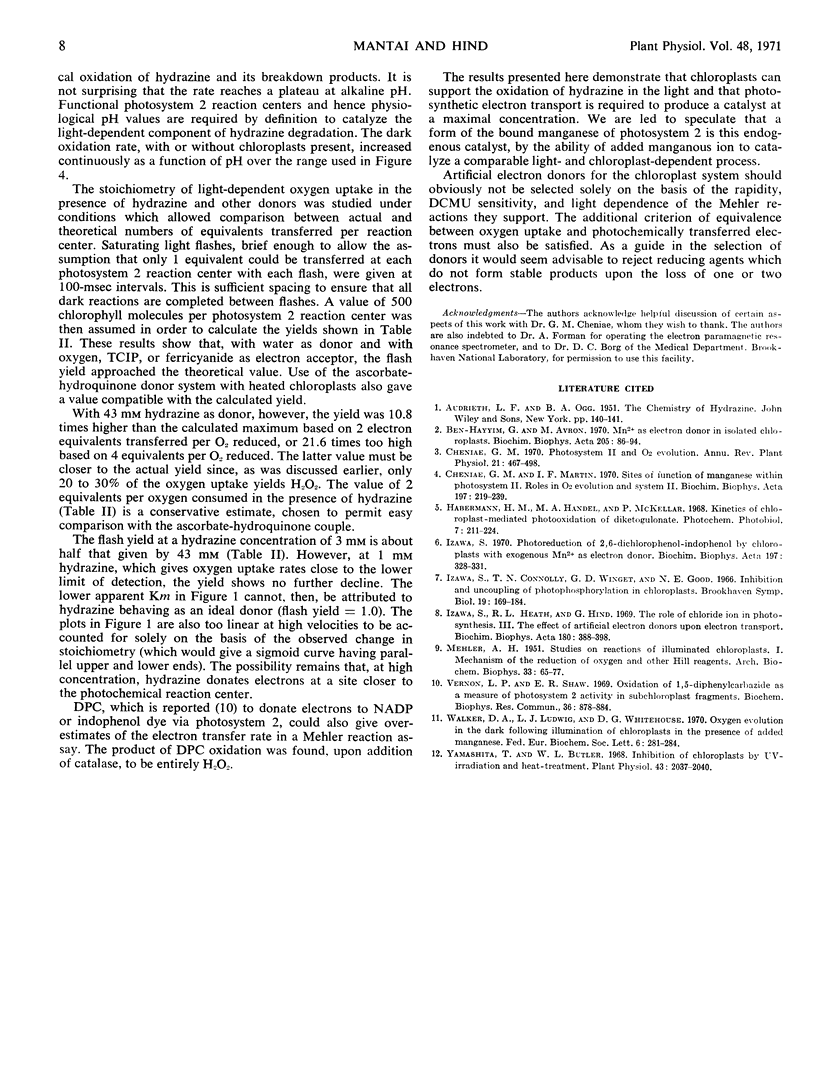Abstract
Hydrazine can support a rapid oxygen uptake in illuminated chloroplasts. The oxygen uptake rate is inhibited by 3-(3,4-dichlorophenyl)-1, 1-dimethylurea but is only slightly increased by added methyl viologen, and little H2O2 is produced. The pH optimum for hydrazine-dependent oxygen uptake is much higher than that of the Hill reaction. Addition of Mn (II) increases the rate of oxygen uptake in the light and causes the reaction to continue in the dark, the dark rate being dependent on the duration of the preceding light period. Flash yield experiments show that at least six electrons are transferred from hydrazine per flash compared to one electron per flash when water is the electron donor.
We conclude that most of the oxygen uptake in the presence of hydrazine is due to a direct oxidation of the hydrazine by oxygen which is catalyzed by some factor, possibly Mn (III), produced by chloroplasts in the light. Other artificial electron donors are shown to support such artefactual oxygen uptake to varying extents.
Full text
PDF



Selected References
These references are in PubMed. This may not be the complete list of references from this article.
- Ben-Hayyim G., Avron M. Mn2+ as electron donor in isolated chloroplasts. Biochim Biophys Acta. 1970 Apr 7;205(1):86–94. doi: 10.1016/0005-2728(70)90064-2. [DOI] [PubMed] [Google Scholar]
- Cheniae G. M., Martin I. F. Sites of function of manganese within photosystem II. Roles in O2 evolution and system II. Biochim Biophys Acta. 1970 Mar 3;197(2):219–239. doi: 10.1016/0005-2728(70)90033-2. [DOI] [PubMed] [Google Scholar]
- Izawa S., Connolly T. N., Winget G. D., Good N. E. Inhibition and uncoupling of photophosphorylation in chloroplasts. Brookhaven Symp Biol. 1966;19:169–187. [PubMed] [Google Scholar]
- Izawa S., Heath R. L., Hind G. The role of chloride ion in photosynthesis. 3. The effect of artificial electron donors upon electron transport. Biochim Biophys Acta. 1969 Jun 24;180(2):388–398. doi: 10.1016/0005-2728(69)90123-6. [DOI] [PubMed] [Google Scholar]
- Izawa S. Photoreduction of 2,6-dichlorophenolindophenol by chloroplasts with exogenous Mn2+ as electron donor. Biochim Biophys Acta. 1970 Mar 3;197(2):328–331. doi: 10.1016/0005-2728(70)90046-0. [DOI] [PubMed] [Google Scholar]
- MEHLER A. H. Studies on reactions of illuminated chloroplasts. I. Mechanism of the reduction of oxygen and other Hill reagents. Arch Biochem Biophys. 1951 Aug;33(1):65–77. doi: 10.1016/0003-9861(51)90082-3. [DOI] [PubMed] [Google Scholar]
- Vernon L. P., Shaw E. R. Oxidation of 1,5-diphenylcarbazide as a measure of photosystem 2 activity in subchloroplast fragments. Biochem Biophys Res Commun. 1969 Sep 10;36(6):878–884. doi: 10.1016/0006-291x(69)90285-x. [DOI] [PubMed] [Google Scholar]
- Walker D. A., Ludwig L. J., Whitehouse D. G. Oxygen evolution in the dark following illumination of chloroplasts in the presence of added manganese. FEBS Lett. 1970 Feb 16;6(3):281–284. doi: 10.1016/0014-5793(70)80078-3. [DOI] [PubMed] [Google Scholar]
- Yamashita T., Butler W. L. Inhibition of chloroplasts by UV-irradiation and heat-treatment. Plant Physiol. 1968 Dec;43(12):2037–2040. doi: 10.1104/pp.43.12.2037. [DOI] [PMC free article] [PubMed] [Google Scholar]


